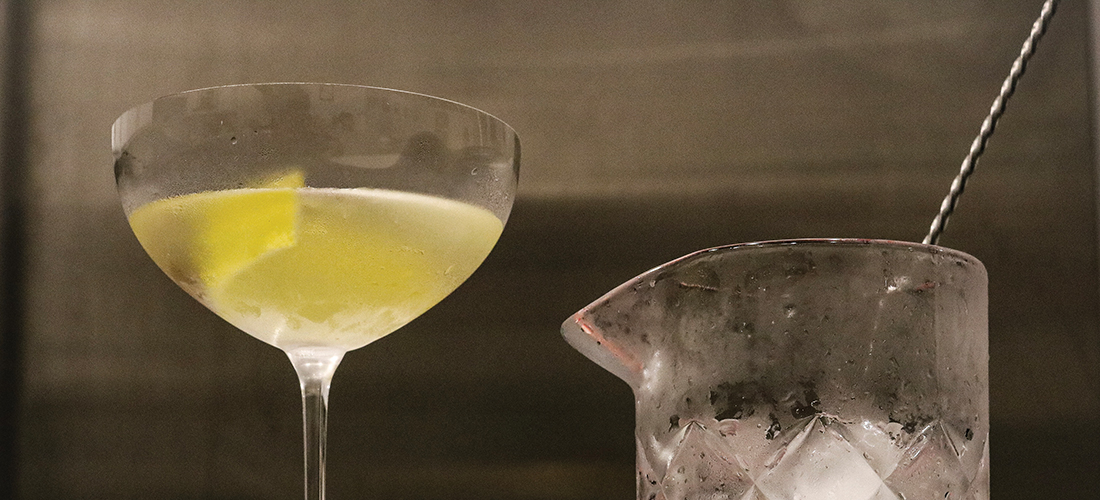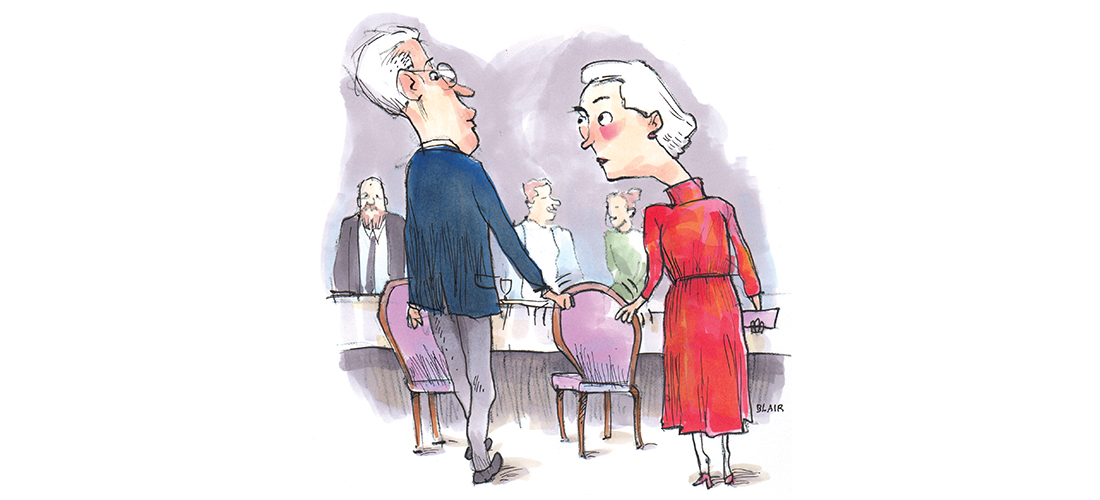Everything worth knowing about the Cape Fear’s peskiest early settler
Story and Photographs by Virginia Holman
There is a saying — its origins are hazy, although it’s most commonly attributed to an African proverb and a quote by his holiness the Dalai Lama: “If you think you are too small to make a difference, then you’ve never been in bed with a mosquito.”
A single, invisible mosquito whining next to your ear as you drift off to sleep on a hot summer’s night creates a human torment that can accelerate from mere annoyance to Edgar Allan Poe lunatic rage in well under an hour. I recall with great clarity summer nights spent arranging the sheets in a tent in my childhood bed, then turning on a flashlight beneath the covers, hoping I could read through the night sealed in a mosquito-free bubble. If not, I’d often watch with childish satisfaction as a mosquito landed on my arm, pierced my skin with its proboscis, and consumed its blood meal. I’d study its swelling abdomen as it filled and plumped and transformed to a slightly iridescent red jewel; then, with my thumb, I’d crush it to a grisly smear. Yes, I wanted to know my nemesis, but only to a point. Even though I was repulsed by mosquitoes, I was also fascinated. A mosquito, lighter than a flake of ash, was annoyingly difficult to kill before it settled in to feed. Like tiny vampires, mosquitoes seemed stealthiest after sundown.
Little did I know then that the tiny mosquito is much more than an itchy annoyance. It is one of the world’s most fearsome monsters. A recent piece by Nicholas Kristof in The New York Times estimated the annual worldwide deaths to malaria alone at close to 450,000: “That figure doesn’t even include deaths from Dengue fever, yellow fever, Zika, or West Nile viruses.”
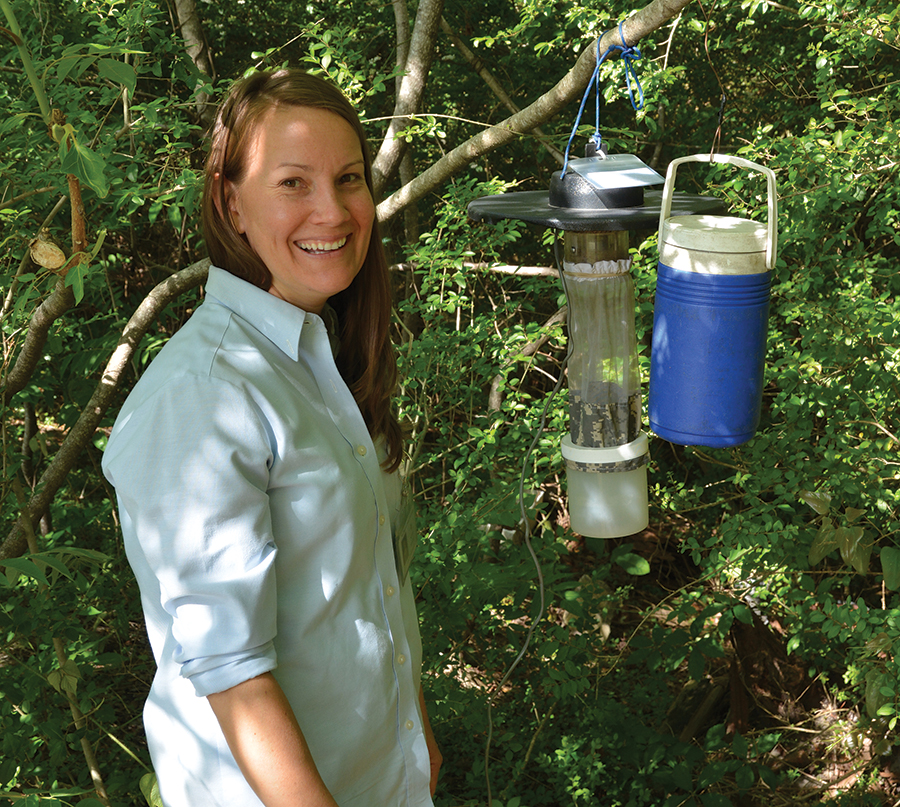
It’s safe to say one of the earliest settlers of the Cape Fear region was the mosquito. The presence of mosquito swarms was well documented by explorers and Colonists as pervasive annoyance. The association between our region and the mosquito was so close that local advertisements during the Revolutionary and Civil War eras feature bed nettings for a peaceful sleep; early resorts claimed they were located far from the maddening creatures. A clever yet pesky social and political caricaturist of Wilmington’s 18th-century political scene adopted as his nom de plume “The Musquetoe,” as he was well aware his antics would not gain him any friends.
James Sprunt, in his Chronicles of the Cape Fear River, writes of a visitor to the region in 1732 who was taken very ill with “ague and fever, which continued on me for nearly a month.” When he recovered, he visited a swampy area near Lake Waccamaw, and crossed it on horseback, “astonished to see the innumerable sight of musquetoes, the largest that I ever saw in my life, for they made nothing to fetch blood of us through our buckskin gloves, coats, and jackets.”
Though mosquitoes swarmed in our region, it wasn’t until the early 20th century that a connection was made between what military historian Andrew Bell calls the “sickly season” that arrived with steamy, hot Southern weather and the mosquito. Bell notes that as malaria-like illnesses and yellow fever raced through the region, most notably during the yellow fever epidemic of 1862, the illness was often blamed on poor sanitation and “regional vapors” or “miasmas” from decaying plants and animals.
While working with the Bellamy Mansion museum as part of her graduate studies, local historical researcher and part-time librarian Kristen Nawn researched the yellow fever epidemic. She became so fascinated by the subject that she now often lectures throughout Wilmington about it. Her approach uses personal accounts gathered from newspapers and letters, offering a view of the epidemic as experienced by everyday Wilmingtonians. “As I began to research the epidemic, I realized there was not a lot of cohesive information from that time,” she says. “My goal was to explain the epidemic in a first-person narrative the best that I could.”
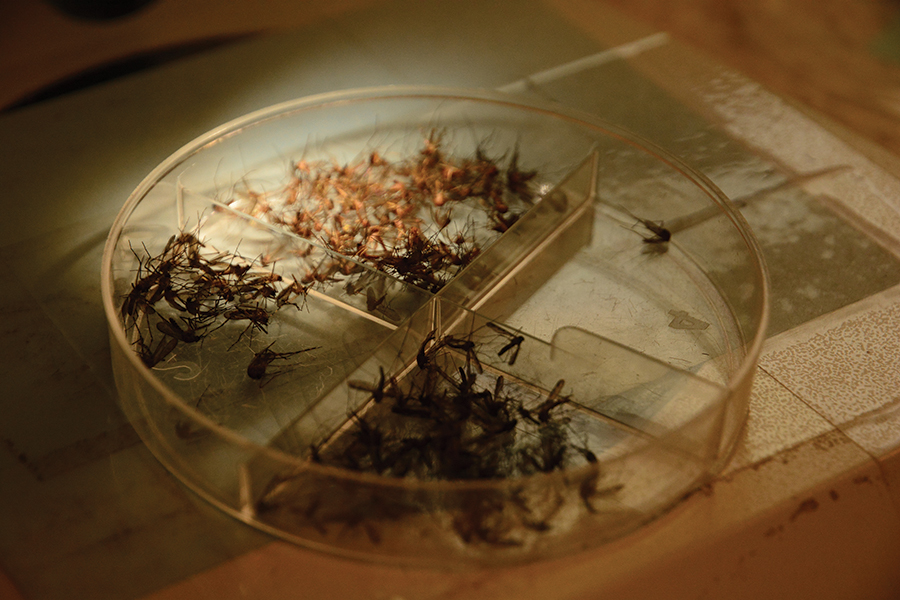
In 1862, no one knew that the cause of the devastating epidemic was mosquitoes — specifically, the female Aedes aegypti mosquito. Even so, Nawn points out, people began employing methods that helped reduce the spread of illness, though not for the reasons they thought. “Residents had this idea that burning pine tar would create smoke that would help ‘lift the sickness out of the air,’” she says. “It did, in a way, since smoke can repel mosquitoes. Similarly, efforts also began to reduce standing water, which was thought to contribute to the unhealthy vapors.” However, since Aedes aegypti mosquitoes breed in standing water, these efforts also reduced the spread of the disease.
Nawn also notes that we may never know the true human toll of the 1862 epidemic in Wilmington. The number of deaths was estimated at 664. But the first yellow fever death wasn’t recorded until September, and “the epidemic had been underway for all of August,” says Nawn. She also points out that the cemetery superintendent at Oakdale died from yellow fever, thus compromising the count of people who perished. “Wagonloads of corpses” were carted to mass graves — the sad result of a wood shortage and a working population so reduced by disease and evacuation that coffins could not be made quickly enough. In addition, Nawn says, the Wilmington Journal indicates that deaths in the black community, mostly slaves, were recorded as broad estimates, those human losses minimized. In addition, people who left Wilmington during the epidemic and died elsewhere are not considered part of the tally. Today, a plain sign on a hill of few headstones in Oakdale Cemetery marks the final resting place of a vibrant community that was decimated by a tiny insect.
Perhaps due to this painful historical memory, we take mosquito control seriously in Wilmington. According to Marie Hemmen, New Hanover County’s environmental health supervisor, different mosquitoes spread different types of disease. Yellow fever was spread by the female Aedes aegypti mosquito, which was last seen in the Cape Fear region in 1992. But the Cape Fear region is host to 44 different species of mosquitoes, so monitoring which mosquitoes are emerging when and where is an important component of disease vector control. Hemmen and her staff monitor traps throughout New Hanover County, and they count and identify each insect under a microscope — tedious and painstaking work — before uploading it to the federal Mosquito Net program, aimed at tracking mosquito populations for better vector control.
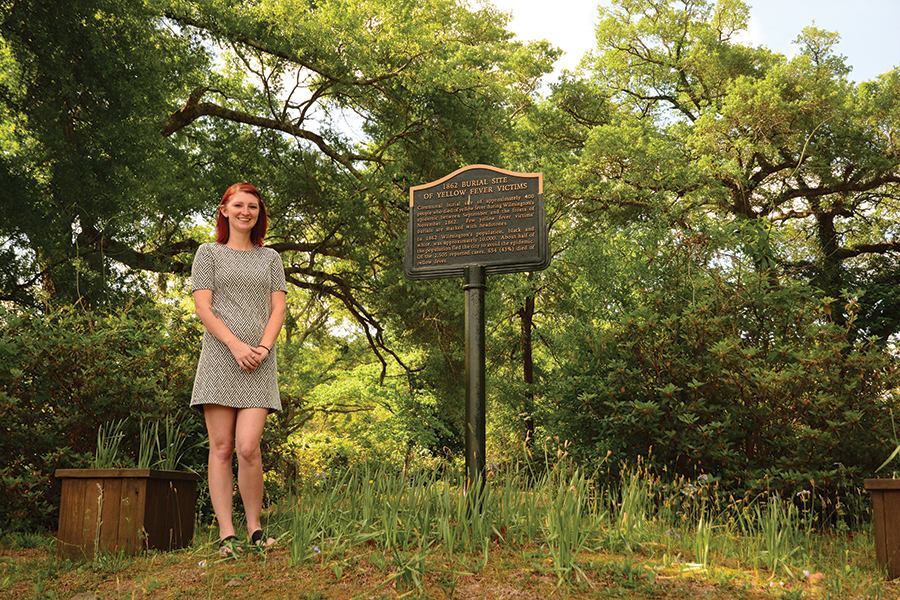
“When we get mosquitoes in the Cape Fear region, we get a LOT of mosquitoes,” Hemmen says with a laugh. How many is a lot? “In 2011, we had a trap with 20,000 in one night, right there near the museum at Fort Fisher. Those were mostly salt marsh mosquitoes.” Unlike Asian tiger mosquitoes, which only travel a few thousand feet, the salt marsh mosquito can migrate 20 to 40 miles, so populations are harder to control. Monitoring mosquito populations helps the county know when and where to educate people about mosquitoes and how to reduce populations. Steps as simple as making sure small amounts of standing water aren’t collecting in boats, flowerpots and other containers, using anti-larval mosquito dunks for birdbaths and garden water features, as well as scheduling pesticide spraying when populations warrant it are the most common methods of control.
When the Zika outbreak peaked several years ago, Hemmen and her staff investigated six cases in New Hanover County. Those with the illness had contracted it elsewhere, but in order to contain the spread, the staff went out to evaluate areas around their homes to make sure that Asian tiger mosquitoes weren’t present, and they did door-to-door education informing people how to help reduce mosquito populations and prevent the spread of disease.
Hemmen says that anyone experiencing a mosquito problem in the county can call, and she and her staff will investigate the cause and advise and assist with population control. Sometimes after massive rain events, high mosquito areas will be sprayed with pesticide. I admit it; I always cringe a bit when I hear the mosquito spray truck coming. Then I think of those who perished in Wilmington during the yellow fever epidemic of 1862, and all the people who still suffer and perish from Zika, West Nile and malaria around the world, and realize how lucky we are to have the expertise of Hemmen and conscientious staff monitoring our region, so we never have another mosquito-related epidemic again.
Author Virginia Holman lives and writes in Carolina Beach.

